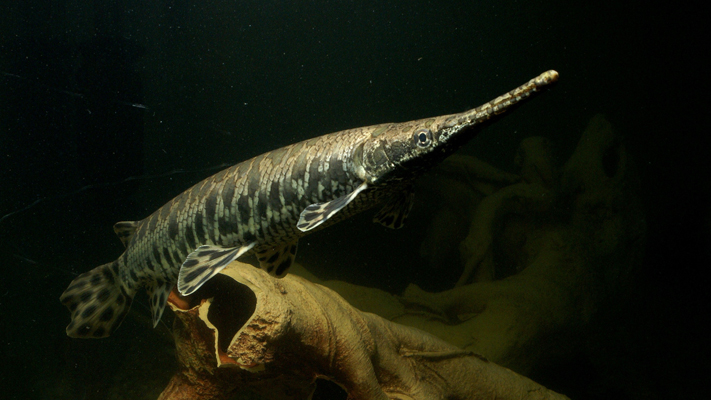Fishing for Insights on Human Health

The spotted gar (Lepisosteus oculatus) is an unusual-looking, long-nosed fish most commonly found along the Gulf Coast of the U.S. and Mexico, but it can range as far north as southern Canada. The fish has survived in a relatively unchanged state since the Cretaceous period, and is often referred to as a “living fossil.” In terms of genetics, the spotted gar is special because its lineage diverged from other teleosts, or fish, before a teleost genome duplication (TGD) occurred.
In the most recent issue of Nature Genetics, a group of researchers has announced the sequencing of the spotted gar’s genome. They are hopeful that this genome – which conserved relatively unchanged chromosomes from its ancestors – will give us insight into human evolution and human health.
Jeff Yoder is an associate professor of immunology at NC State’s College of Veterinary Medicine and a contributor to the gar genome project. He agreed to a short Q&A about the significance of the spotted gar’s genome.
What is unique about the gar – are they, like crocodiles, largely unchanged from their primitive past in terms of the genome? Why is their unique genome helpful in comparisons with humans?

Gar are unique in that they are slowly evolving so can provide insight into what ancient genomes may have looked like. They are also special fish, because they are from a more ancient lineage that did not duplicate their genomes (like all teleosts). Researchers believe that the TGD occurred approximately 350 million years ago in a common ancestral species of all teleosts, but one which was not related to the gar. At the time the TGD duplication occurred, there would have been two copies of each gene within this primordial teleost species. Over evolutionary time, however, there was only pressure on one copy of each gene to maintain function. The second copy of each gene was then “permitted” to accumulate mutations that may have changed the function of the gene and/or been mutated enough to lose function and become unrecognizable.
As more mutations occurred, more teleost species arose and it is estimated that there are more than 26,000 teleost species currently on earth. Because the TGD and the subsequent evolution of teleosts has generated such complex diversity between different teleost genomes, there are times when it is difficult to make direct comparisons from teleost genomes (like zebrafish, which are commonly used for this purpose) to the human genome and vice versa. By having the gar genome as a reference, it should make the comparison of teleost genomes to human genomes easier.
How can the gar genome help us learn more about human diseases?
With the TGD, teleosts have accumulated additional copies of genes that may provide benefits for specific species, but not be essential. Since the gar did not experience the TGD, we assume that its genome will be similar to teleosts, but more reflective of an essential collection of genes such as those present in humans. The gar genome will help researchers who use teleosts to model human diseases sift through these extra teleost genes. The goal is to be able to make better comparisons of the genes implicated in teleost disease models to the human genome, thus providing more focus on which genes to study in human patients.
One good example of what we discovered is that for one class of immune receptors that recognize pathogens, some of the gar receptors are more similar to human receptors while others are more similar to teleost receptors. This really demonstrates the ancient nature of the gar in that it shares genomic features with teleosts and with humans. With these data, we can now have a better look at how the genes encoding these immune receptors have evolved over hundreds of millions of years and these analyses will help when designing experiments aimed at understanding the conserved and diverged roles of these receptors in human and fish health.
What was your involvement in the project?
I spearheaded a group of comparative immunologists who analyzed the immune genes encoded by the gar genome. This group included my functional genomics graduate student, Dustin Wcisel, along with experts at: the University of South Florida in St. Petersburg, Florida, the Graduate University for Advanced Studies in Hayama, Japan, and the Benaroya Research Institute in Seattle, Washington.
What are the next steps, if any, in this research?
As many immune-related genes display genetic diversity within a species, we are interested in looking at the diversity of the immune genes between individual gars. Although more slowly growing than other laboratory models (e.g. zebrafish), the availability of gar embryos and the ease of raising eggs to adults in the laboratory make gar a ray-finned species of choice when analyzing many vertebrate developmental and physiological features.
Editor’s note: This article, written by Tracey Peake, first appeared on the NC State News site: https://news.ncsu.edu/2016/03/yoder-gar/


